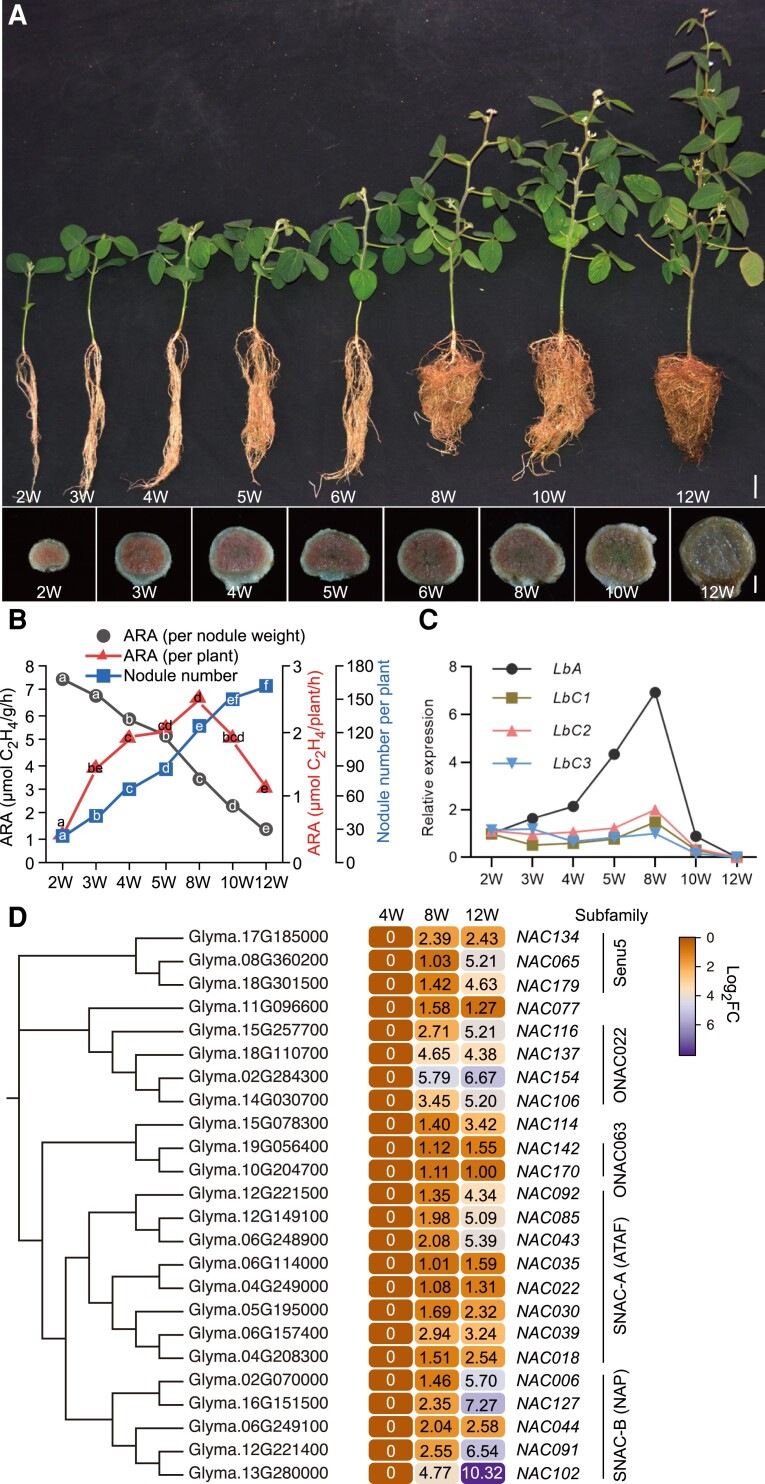Figure 1.
Analysis of plant-specific NAC family during soybean nodule senescence. A) Plant and nodule development at different time points after inoculation with rhizobia. Five-day-old soybean seedlings grown in vermiculite were inoculated with rhizobia and grown for an additional 2, 3, 4, 5, 6, 8, 10, or 12 weeks (W). The upper panel illustrates plant growth at the different stages; scale bar = 5 cm. The lower panel shows longitudinal sections of nodules at the different stages; scale bar = 0.3 mm. The largest nodules at the base of the primary root were used for sections. B) Nitrogenase activity and nodule number at different developmental stages. Values represent the means ( 2W, n = 8;3W, n = 15;4W, n = 15;5W, n = 15;8W, n = 7;10W, n = 7;12W, n = 8 ). ARA, Acetylene reduction activity. Significant differences were determined by a two-tailed Student's t -test and are indicated by lower-case letters. C) Relative expression of leghemoglobin genes LbA, LbC1, LbC2, and LbC3 in nodules at different developmental stages determined using the comparative Ct method. Soybean ACT11 was used as an internal reference. Two samples for each time point were used for RT-qPCR. The largest nodules at the base of the primary root were harvested for each sample. D) Phylogenetic analysis of NAC proteins and gene expression patterns of senescence-induced NAC genes in soybean nodules. Expression data were obtained from RNA-Seq analysis of 4-, 8-, and 12 wpi (weeks post-inoculation) nodule samples. Number indicates the relative expression levels of genes.

